Yoga For Beginners: Harmonizing Body And Mind
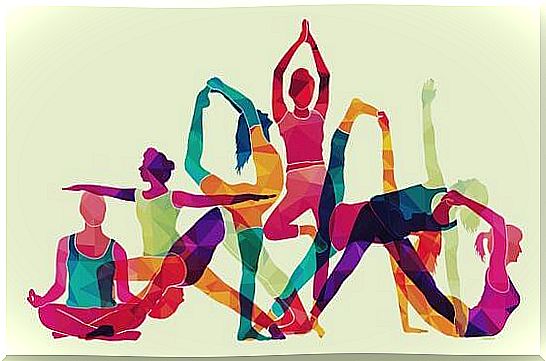
Yoga for beginners is intended for those who approach this physical and mental discipline out of simple curiosity or who are looking for an alternative therapy to relieve stress, anxiety or sleep disorders. Whatever the reason, there are different positions (asanas) that will allow us to easily enter the world of yoga to discover its great benefits.
It is often said that those who make yoga a daily practice will no longer see life as before, it will change forever. It may seem an exaggeration, especially if we consider this discipline as a series of exercises to adopt certain positions; yoga is so much more. Because yoga transcends the physical plane to get to the mental and emotional one, favoring a balance that is experienced at all levels of reality.
It is an exercise capable of expanding into all areas of our being: it guarantees us a more resistant and flexible body, a more centered mind and, it would seem, even a more noble and receptive spirit. Whether it seems an exaggeration or not, we are faced with a practice recognized by organizations such as the American Association of Psychology (APA), which endorses with various research the benefits it brings, above all, to our mental health.
It is always a good time to try new experiences and, if these are as positive as they are rewarding, it is worth risking and perceiving the impact that this original Indian practice causes in us, whose name derives from Sanskrit and means “union” .
Yoga for beginners: learning to listen to the body and mind
There is a yoga for beginners and one for those who already know the needs of their body and the positions that, day after day, promote balance and well-being. But first of all, one important thing must be said: if we have never practiced this type of exercise, it is not advisable to force our body or start with complex techniques. Otherwise, we run the risk of injuring ourselves.
In short, the important thing is to start calmly to understand what it is and what benefits this practice gives us. Because, as we said at the beginning, it is not just a matter of carrying out a series of positions with the body. Yoga combines stretches with deep breathing and meditation. All this will give us, little by little, a better physical condition, flexibility, greater lung capacity, a more harmonious heart rate and less joint pain.
It’s worth a try, but we’ll do it with balance, starting with the poses that come under yoga for beginners.
1. The position of the warrior
During the practice of yoga, ‘asanas’ (positions) are performed which help us to develop an intimate and silent dialogue with our body to know ourselves better, to accept our physical and mental reality. In all of these asanas we find those that constitute a good exercise in preventive medicine and that are perfect for starting the practice of yoga. The warrior stance is one of them. Let’s see how to do it below.
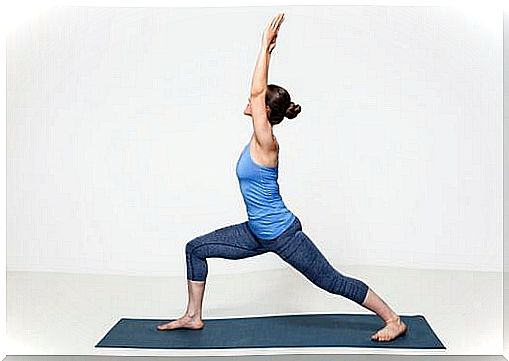
- Place yourself on a mat.
- Separate the legs and turn the foot of the front leg 90 degrees and the other foot 60 degrees.
- Feel the floor under the soles of your feet, for that is where your foothold is and where your strength arises.
- Now, little by little, bend the left leg until the thigh is parallel to the floor.
- Check that your knees are in line with the heel.
- Keep your back straight and raise your arms.
2. Position of the upside-down dog
In yoga for beginners we find basic asanas among which those of the upside-down dog and the upside-down dog are undoubtedly the most common. However, if we have never practiced yoga, we will start with the first asana which is the simplest.
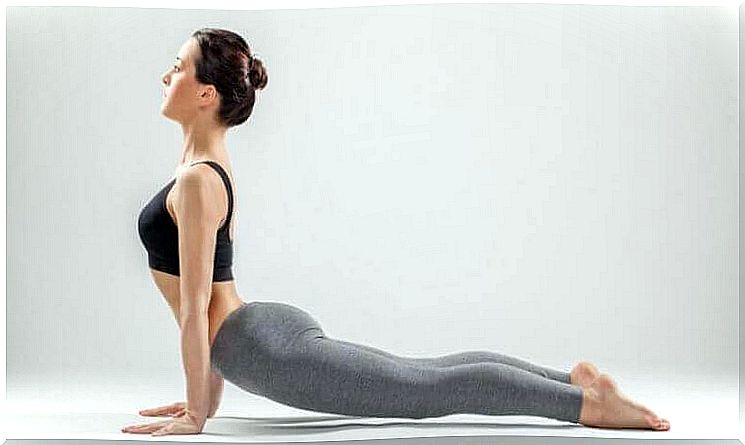
- Lie on your stomach on the mat.
- With your palms open, place your hands at shoulder height to lift yourself slightly off the ground.
- At the same time, extend your arms as you arch your back back.
- Next, lift your hips and knees off the ground as well. All the strength must fall on the arms.
- Try to bring the shoulder blades together without forcing, so that the sternum goes forward. Try not to overload the lower back.
3. The position of the shoemaker
You will love this position. Also known as “baddha konosana” or the butterfly, it is ideal for all beginners and one of the most important in yoga. Here are the steps to follow:
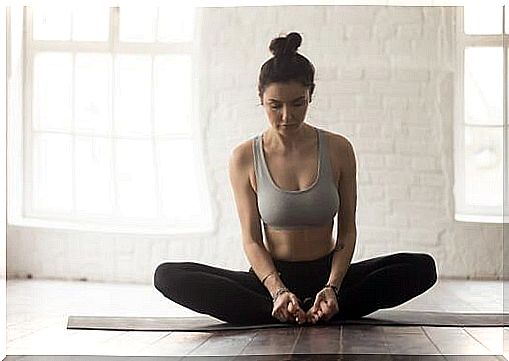
- Sit on the ground with your back straight. Bend your knees and bring the soles of your feet together. It is not necessary to force, it is about assuming a posture with which to feel good without feeling pain.
- Feel how the knees drop to the sides, slightly stretching the thighs and groin.
- As you feel more comfortable, lower your knees a little more, bringing the weight towards your buttocks, always keeping your back straight.
- Now take the big toe of each foot and try to separate them slightly. Feel how the pressure in the heels increases.
4. Position of the child
Within yoga for beginners, the child posture or Utthita balasana is one of the best known and most relaxing. Once known and practiced, we will always try to find a moment during the day to repeat this cathartic and beneficial asana. Here are the steps to follow:
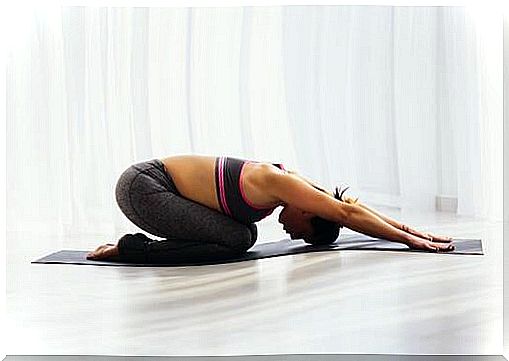
- Kneel on the mat.
- Put your toes and heels together.
- Reach forward, stretching your arms over your head.
- Place your palms wide open on the mat.
- Finally, rest your forehead on the floor and breathe deeply.
To conclude, as you can see, yoga for beginners is not only simple, but it is also relaxing and will allow you to relieve muscle overloads and tension. If you do it without forcing too much and considering your physical limits, you can gradually insert new more complex asanas to experience the benefits of this ancestral practice so effective.









